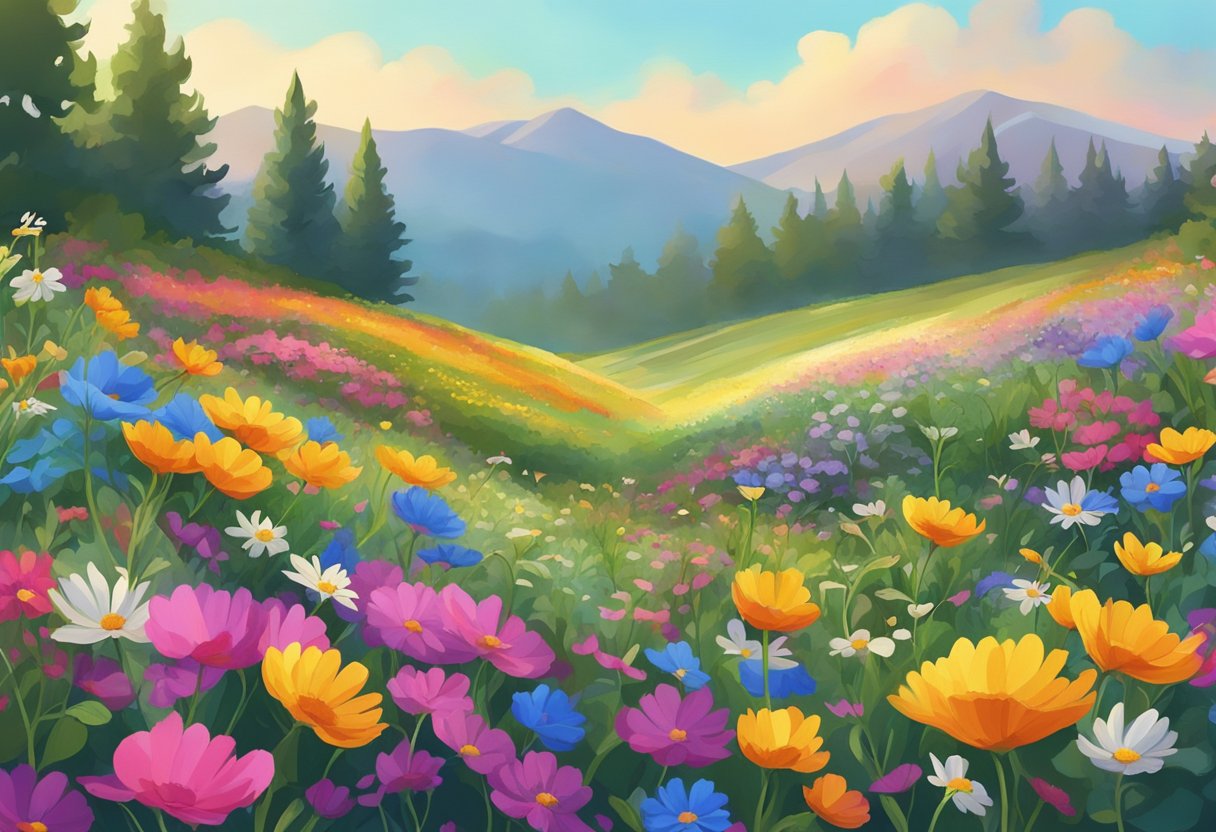The world of flowers is diverse and stunning, offering a myriad of shapes, sizes, and colors to behold. I’m constantly amazed by the unique beauty each type of flower possesses. For many, a garden becomes a personal sanctuary, adorned with these living jewels, where the beauty of nature can be appreciated up close. Delicate or bold, simple or intricate, flowers captivate with their beauty and create an ambiance of serenity and joy in any setting.

In my experience, the breathtaking blue-violet blooms of plants such as cultivars add a touch of vibrant color and life to gardens. The summer months especially bring forth their glory when the flowers are in full bloom. Similarly, flowers like Gardenias, despite needing specific conditions like high humidity to thrive, reward gardeners with their rich scent and waxy, elegant flowers. They contribute not just to the visual splendor of a garden but also encompass it with their alluring fragrance.
From the layered petals of Dahlias to the crown-like structure of the Fritilaria Imperialis, each flower has its unique charm. Roses, often celebrated for their classic beauty, have inspired artists for centuries. These beautiful manifestations of nature not only add to the aesthetic value of our surroundings but also have the power to uplift spirits. As I walk through my garden, the variety of textures, hues, and fragrances is a daily reminder of the simple pleasures life has to offer.
JUMP TO TOPIC
Selecting the Right Flowers for Your Garden
In my journey of gardening, two aspects have become pivotal: choosing the right colors and plant types that complement each other and factoring in their blooming longevity and scent.
Understanding Color and Design
When selecting flowers, I consider the overall design and color scheme. Particular colors evoke different moods in a garden. Here’s a table reflecting what colors like red, purple, pink, and yellow can contribute:
| Color | Mood | Examples |
|---|---|---|
| Red | Passion and Energy | Roses, Dahlia |
| Purple | Royalty and Elegance | Lilium, Orchid |
| Pink | Softness and Playfulness | Roses, Tulips |
| Yellow | Cheerfulness and Warmth | Marigold, Tulips |
Annuals vs. Perennials
Annuals and perennials serve distinct roles in a garden. Annuals, like marigolds, bring a quick splash of color, but they only last one season. In contrast, perennials might take longer to establish, but they return year after year. I balance both in my garden for varied and continuous blooms.
The Importance of Fragrance
There’s something unforgettable about the fragrance of a garden. I plant roses and sweet peas for their delightful scent, which elevates the garden experience. Fragrant flowers can act as a natural perfume for your space, so I always include a few varieties known for their aroma.
Caring for Your Garden Flowers
Every flower has unique requirements, but proper soil, adequate sunlight, consistent watering, and pest control are crucial for a thriving garden.
Optimal Soil and Sunlight Conditions
In my garden, I’ve learned that sunflowers and lavender love full sun, while bearded irises thrive in well-drained soils and at least half a day of sun. Daisies and zinnias are also sun lovers and do well with similar conditions. For those with shaded ponds, lotus and water lilies prefer still water and full sunlight.
Watering Techniques and Tips
Consistent watering is key. I water early in the morning to minimize evaporation and provide ample moisture for the day ahead. The lavender in my garden prefers to stay on the drier side, whereas my zinnias need a more generous drink in the summer heat. Overhead sprinkling is convenient, but direct soil watering reduces leaf wetness and disease risk.
Pest and Disease Prevention
💥 Preventing pests and diseases is easier than curing them.
I regularly inspect my plants for signs of trouble. Plants like sunflowers may attract aphids, so I use insecticidal soap as needed. For **bearded irises**, well-drained soil prevents rhizome rot. Companion planting lavender can deter deer and rabbits while attracting beneficial pollinators to my sunflowers and daisies.
Designing Beautiful Floral Arrangements
When creating floral arrangements, the selection of flowers and their placement are paramount. I always focus on achieving harmony and visual appeal, taking into consideration color schemes and structural balance.
Choosing Flowers with Complementary Colors
I find that choosing flowers with complementary colors is crucial to designing an eye-catching arrangement. For example, the vibrant blues and purples of an iris can be beautifully juxtaposed with the warm hues of golden tulips. Arranging flowers by color creates a palette that can lead to either striking contrasts or soft harmonies, which both convey different moods.
- Purples and Yellows: Iris with Yellow Tulips
- Reds and Greens: Exotic flowers like Red Amaryllis with Green Foliage
- Pinks and Blues: Pink Roses with Blue Delphiniums
Creating Visually Striking Compositions
My approach to creating visually striking compositions is to balance showy elements with a sense of elegance. I use a mix of focal flowers like exotic flowers or large blooms, and then add smaller, more delicate flowers to complement them. Variations in size and texture bring depth to the arrangement.
💥 Composition Tip: Create a focal point using a large, showy bloom, then surround it with smaller flowers and greenery to lead the eye throughout the arrangement.
For asymmetry and natural movement, I often let some elements, perhaps a willowy branch or a flowing tulip stem, extend beyond the border. This introduces a dynamic element to the compositions, suggesting a snippet of nature captured in a vase.











